Strategy & Vision / Research / Product & User Experience Design / 2020 - 2022
Laerdal Medical
Building Lifesaving Solutions.

/ Overview
Laerdal Medical is a global leader in medical simulation and education, with a rich history of innovation and design. At Laerdal, design is a core value, and the company places a strong emphasis on creating products that are not only functional and effective, but also aesthetically pleasing and user-friendly. As a Designer at Laerdal, I was able to contribute to this vision by conducting user research, developing product strategies and visions, and designing intuitive and engaging user experiences.
/ My role
Product Design, Strategy & Vision, User Experience Design, User Research, Analysis, User Interface Design, Ideation, Stakeholders and Team Workshops
Worked alongside the greatest Community Bystanders Team & Extreme Digital Responders
Making lifesaving skills training available at home.
The CPR Training that can be done at home with a Mobile Device and a Pillow that has been proved after training first 10.000 people to be as effective as CPR Training teached in First Aid Trainings.
Data based on Laerdal estimations that one life is saved every 10.000 people trained in CPR in the old fashioned way, RevivR has achieved the same after the first 10.000 people were trained in the UK.
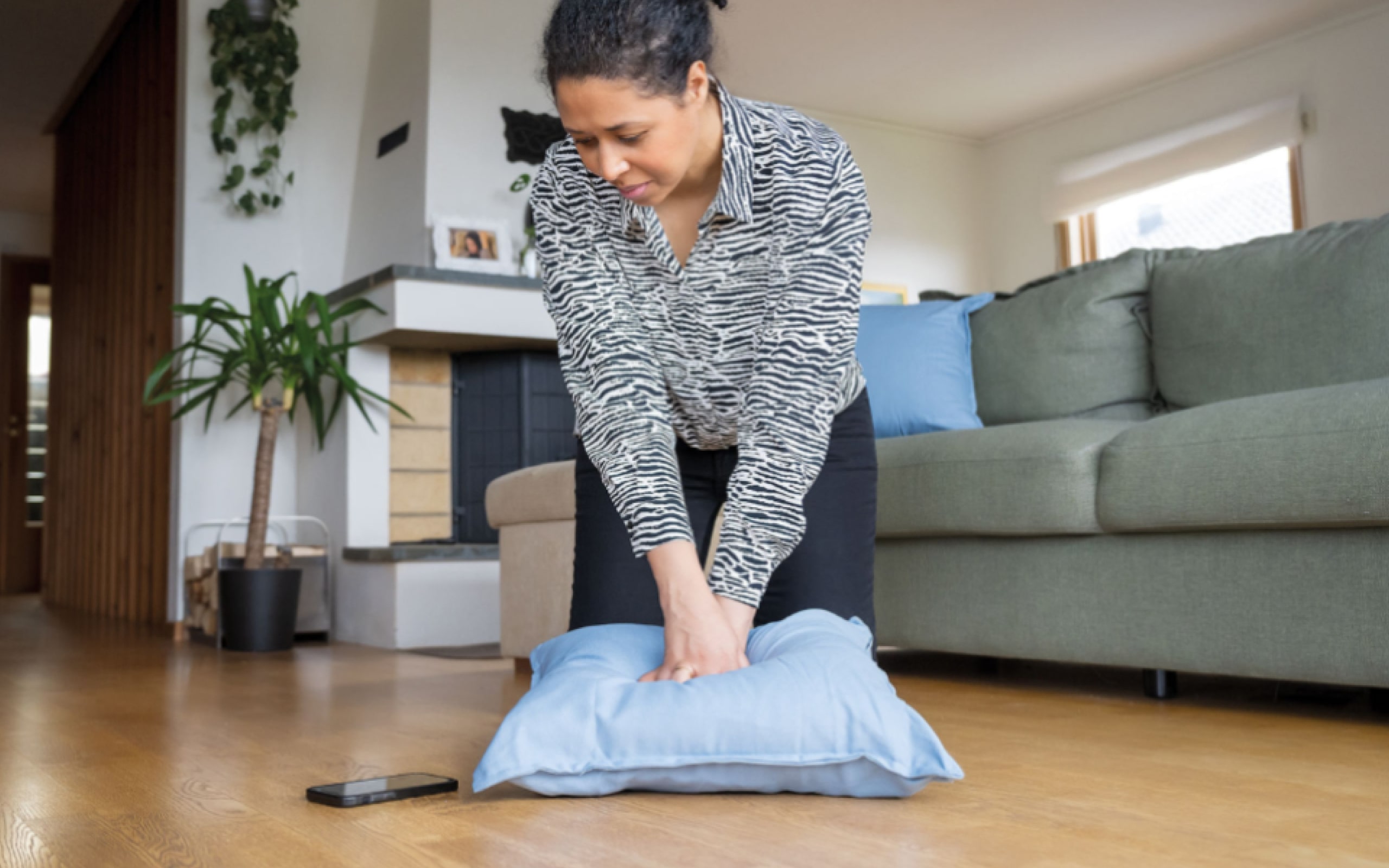
Laerdal successfully launched the CPR Training RevivR with it’s first partner in the United Kingdom creating tens of thounsands of lifesavers in 2022.
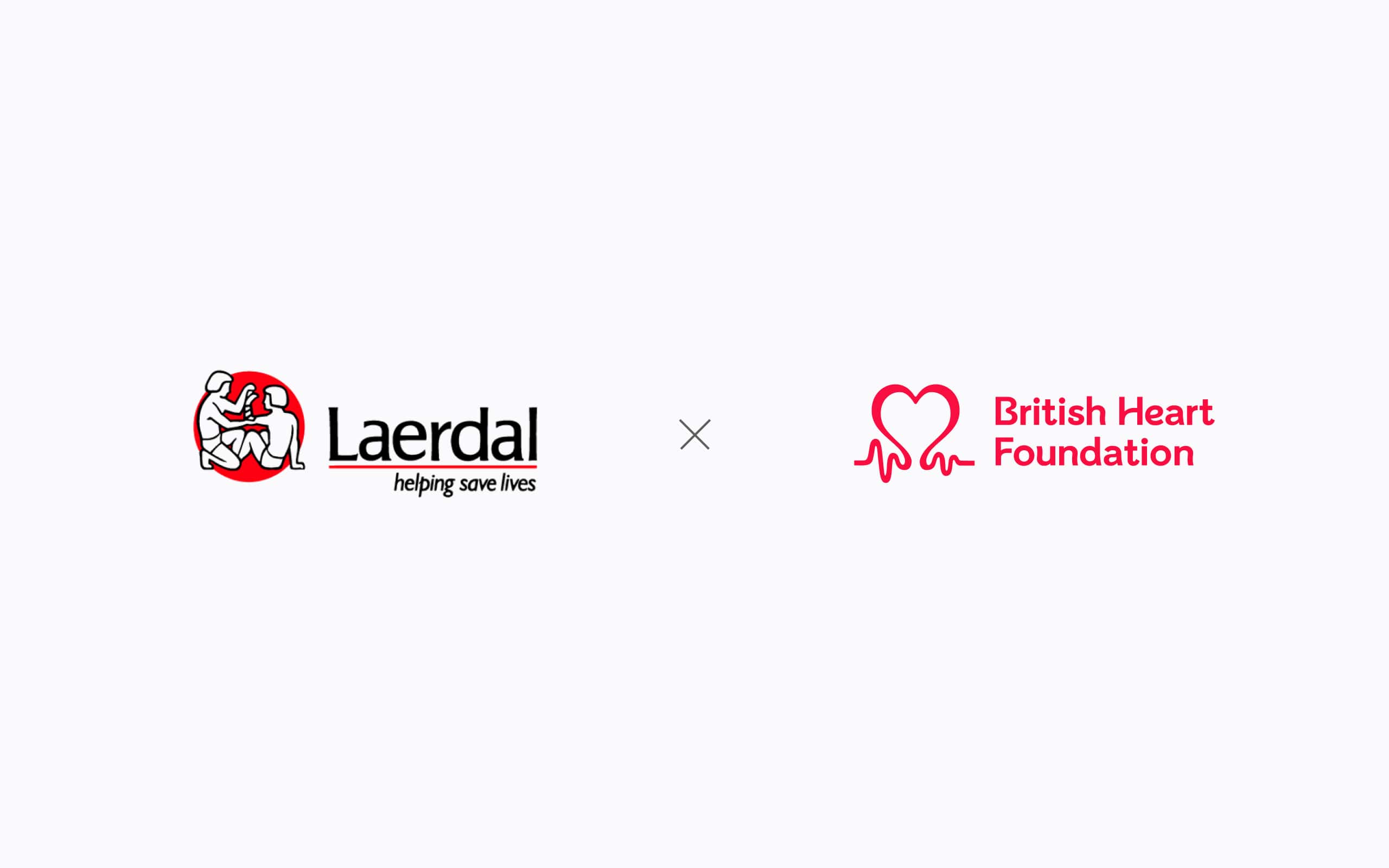
Design played a core role in early understanding and throughout the early and late product lifecycle to create lifesaving solutions.
- Early Discovery & Product Design
- Data and Customer Obsessed: Research & Strategy
- Fail and Learn Fast: Experiment, Design Ideation: Design at it’s finest
- Importance of a Shared Design Culture: Design inside Organisation and Team
- Key Takeaways: Design for Life Saving
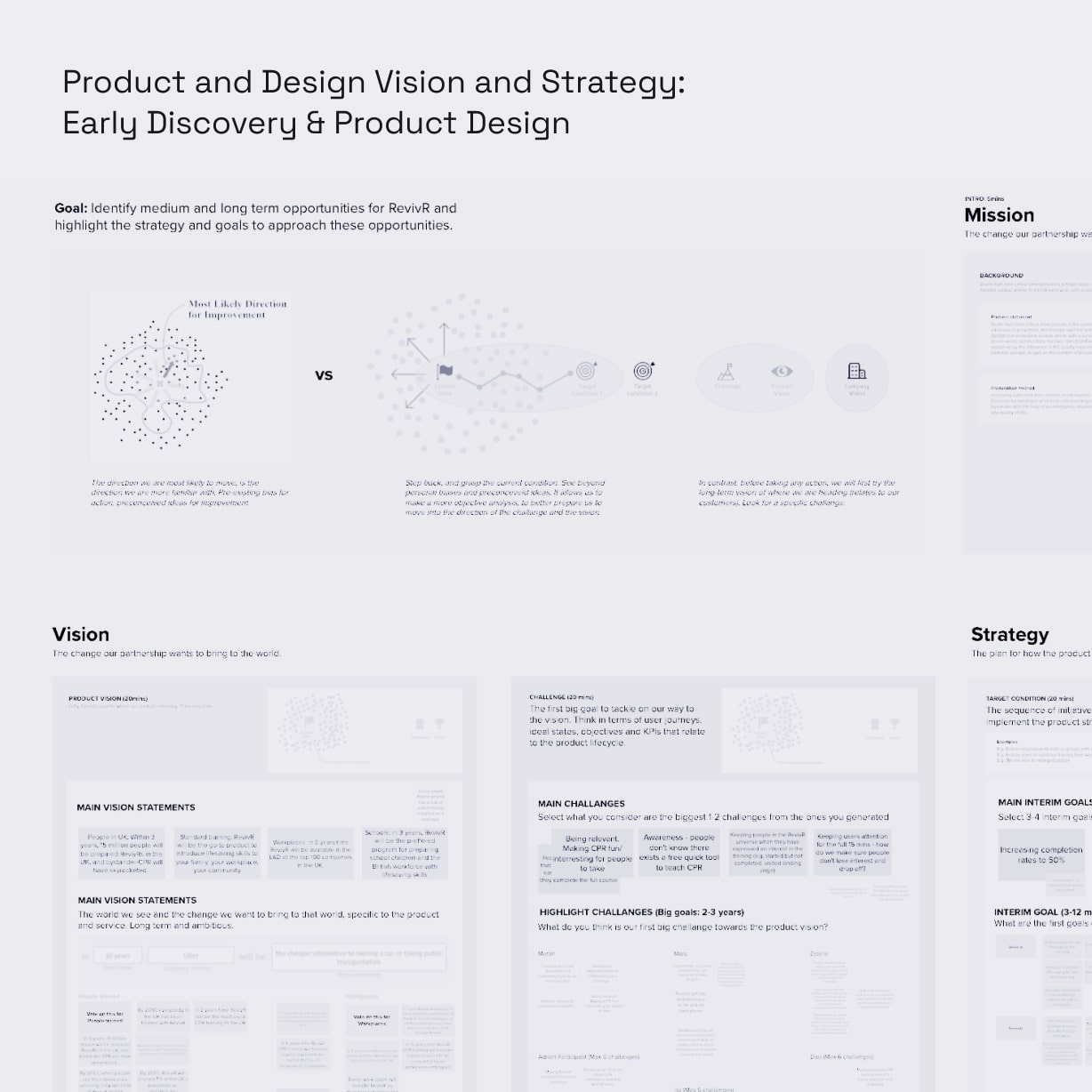



Started from the common mission of Laerdal and British Heart Foundation. Bold ambition we can not achieve alone.

Laerdal’s Mission
No one dies or gets disabled from time-critical emergencies in the community as mobilised first responders teams quickly respond with quality care.
www.laerdal.com
BHF’s Mission
A world free from the fear of heart and circulatory disease.
www.bhf.org.uk
We have challenged the status quo of acquiring lifesaving skills. We wanted to answer if a CPR training that can be done at home could make healthcare more accessible and effective.
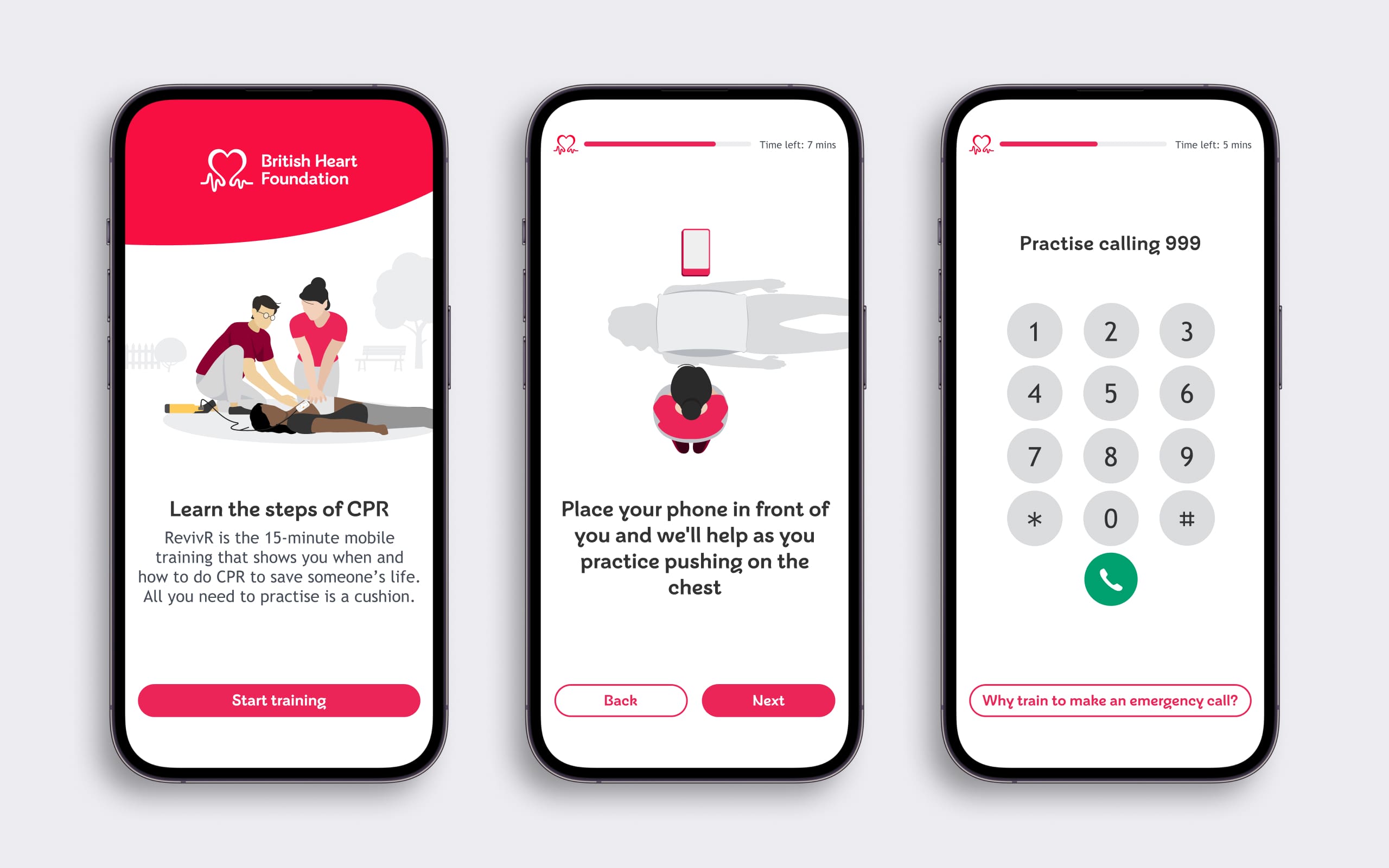
During the user research, we aimed to address the main problems and fulfill the most impactful needs while we fit the company’s development process and business goals.
- Developed a product vision and roadmap based on user research and business objectives.
- Collaborated with a cross-functional team, including healthcare professionals, stakeholders, partners, managers and developers, to develop a product strategy.
- Conducted user research to gain insights into user needs and pain points related to CPR training.
Exploring the understanding of the broad population to time-critical emergencies and importance of lifesaving skills and confidence to save someone’s life.
- We have discovered that confidence is an important aspect in estimating the possibility of one’s life to be saved if a bystander is close. We know people can freeze in these kind of situations so we know confidence is a critical aspect we have to focus on if we want to bring CPR training at home and more importantly to create prepared lifesavers ready to respond.
- Unfortunately, only about 40% of people who experience an OHCA get the immediate help that they need before professional help arrives.
- New research shows just 5% of adults have the skills and confidence to provide first aid in emergency situations (redcross.org.uk)
We believe lifesaving skills can be more accessible and effective for the broad population. What if people could learn to save a life from almost anywhere?
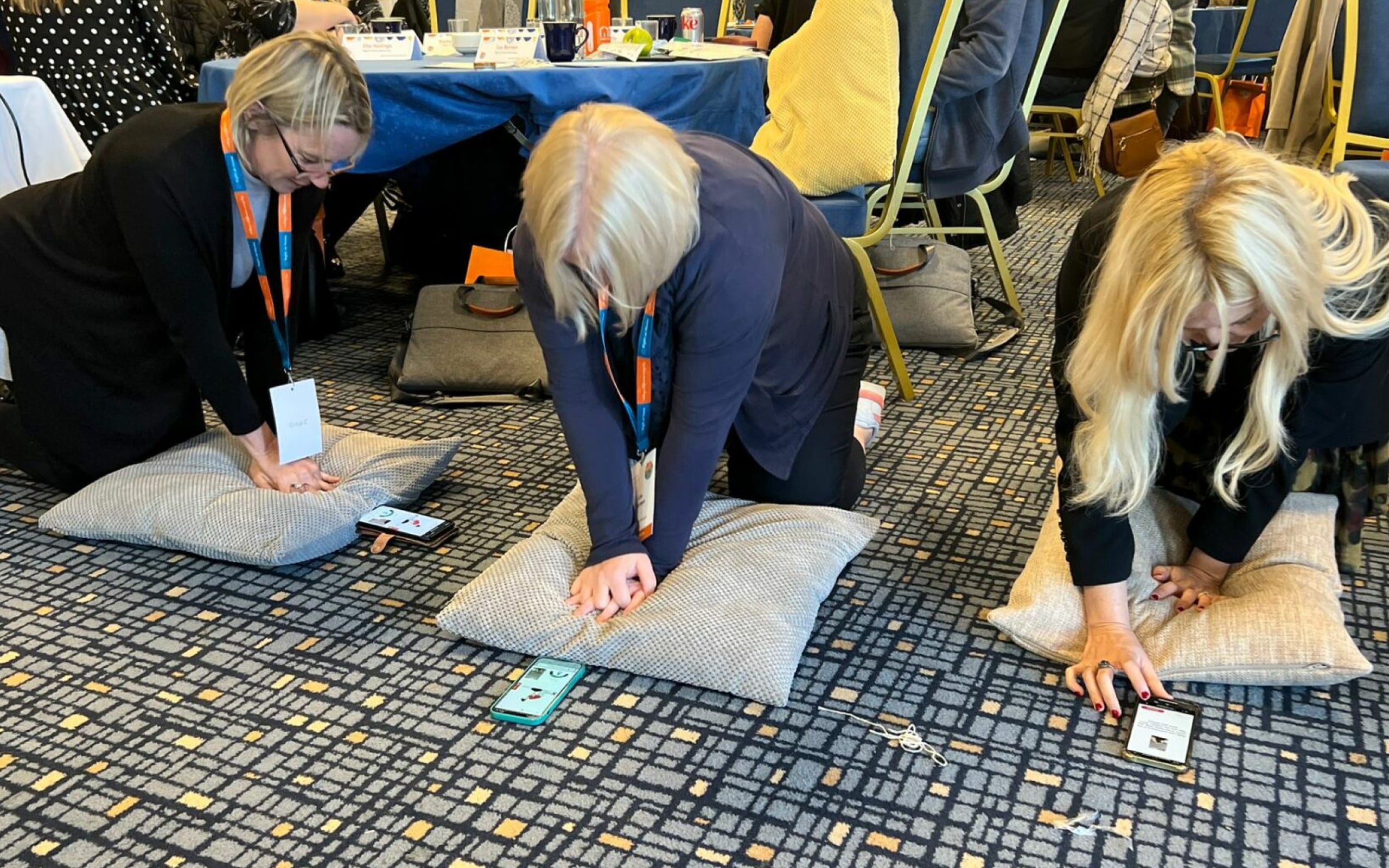
How might we improve the first link of the Chain of Survival, and improve the outcomes from cardiac arrest, by preparing bystanders capable to early recognise, and offer rapid and quality care as critical for both survival and quality of life.
Simplifying the educational process for a phone screen and props anyone can have at home.
What if people can acquire the CPR skills and confidence at home. We have iterated and tested quickly in the office with different kinds of pillows to see what outcomes could these bring to a person learning CPR skills. We have tested the prototypes in the cafeteria during lunch and had some fun learning from people.
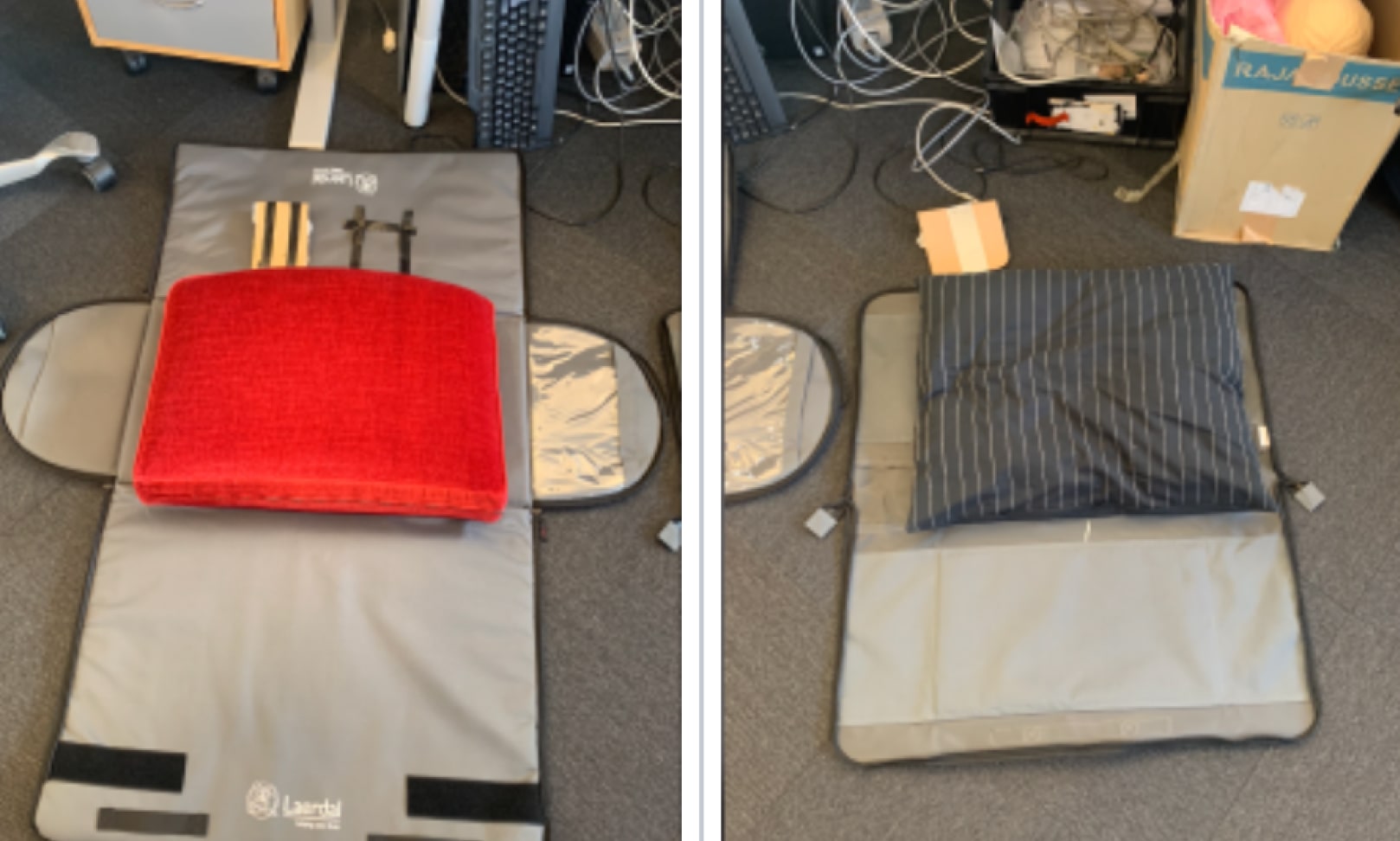
We decided to refresh the physical CPR trainings and prototyped a mobile CPR training for home. First Aid trainings inspired our design decisions for our educational content foundation.
- Mapped the First Aid CPR Training module
- Restructured the content to be short and effective
- We knew we had to focus on increasing the confidence of people trained
- We knew we had to test it quickly with users to start learning really quick. We had to fail and learn fast.
- We had to learn from customers and be user obsessed and data driven.
- We had to understand the business case and desirability of such a solution
- We used Laerdal’s Technology to detect the compression rate using mobile device’s cameras
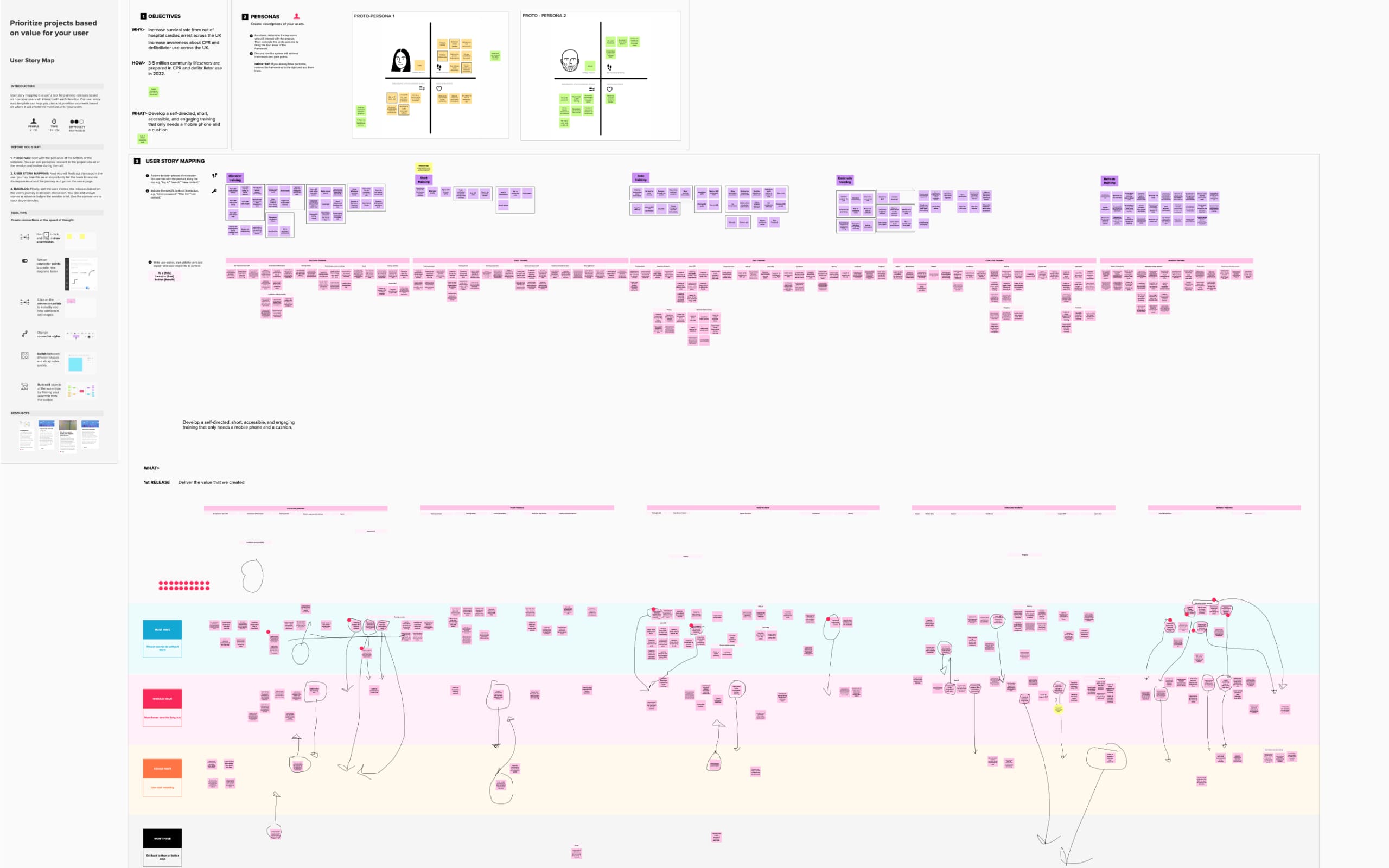
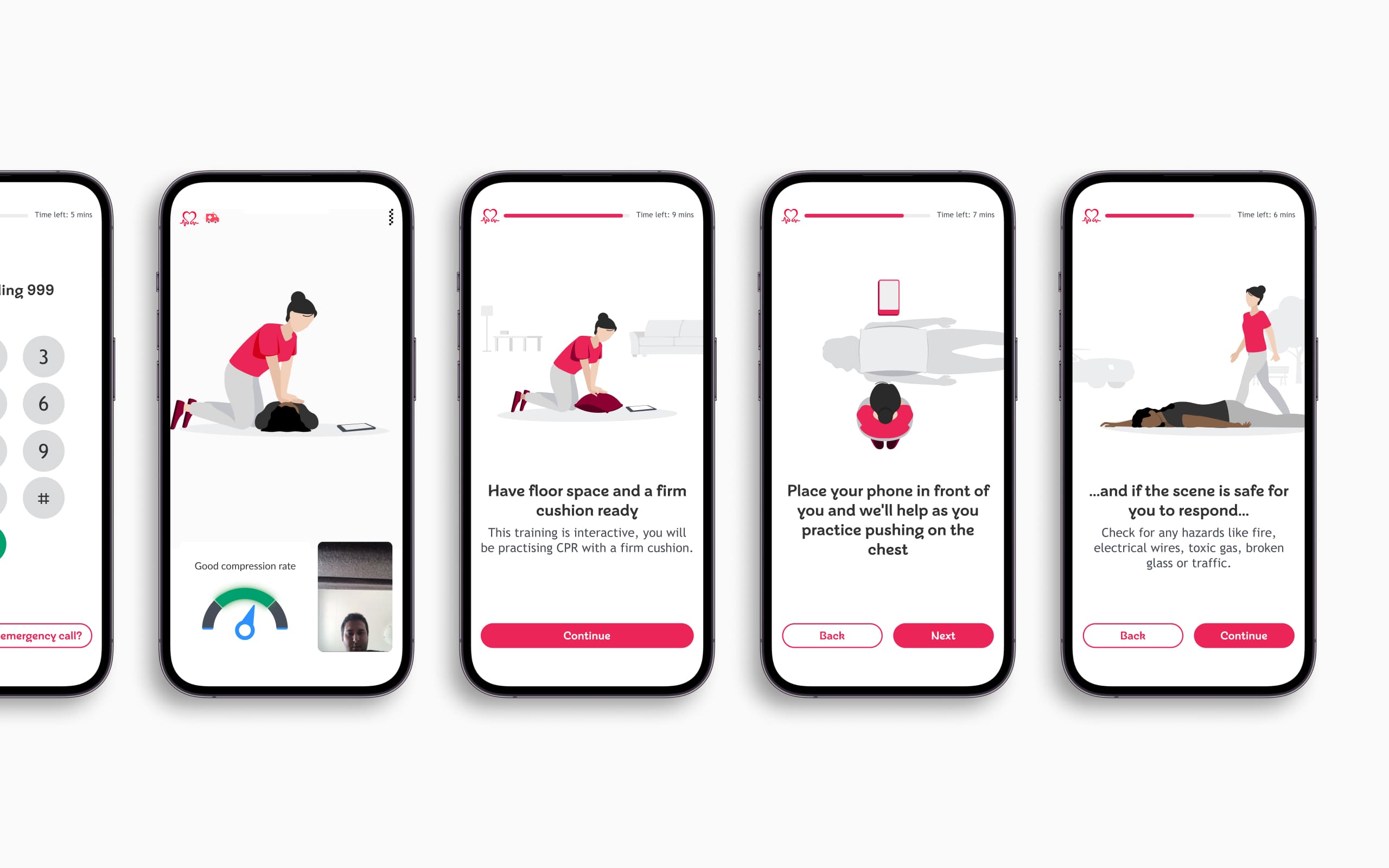
What is the least people have to know to provide quality care in case of out of hospital cardiac arrest?
Identity an emergency and ask for help and emergency services
Know where to call and what to tell the operators
Act in case life support is needed and can be provided with proper care
Know the lifesaving skills and have the confidence to act
Know where are the defibrillators
(Intro, Identify an Emergency, Call 999, Do CPR, Defibrillator)
Created user personas and scenarios to guide the design process
Created wireframes and low-fidelity prototypes to test design concepts with users
Conducted usability testing to refine and improve the product design

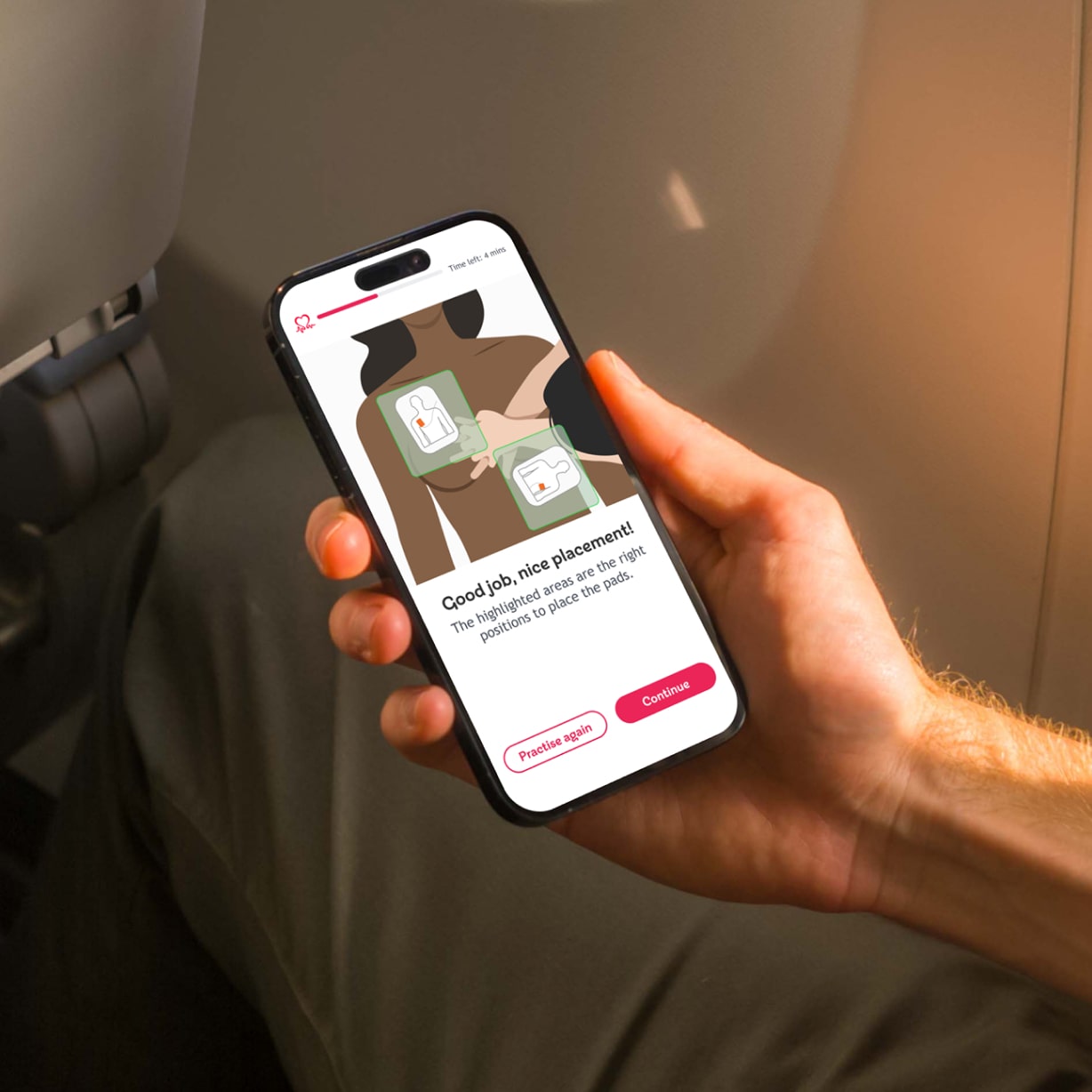
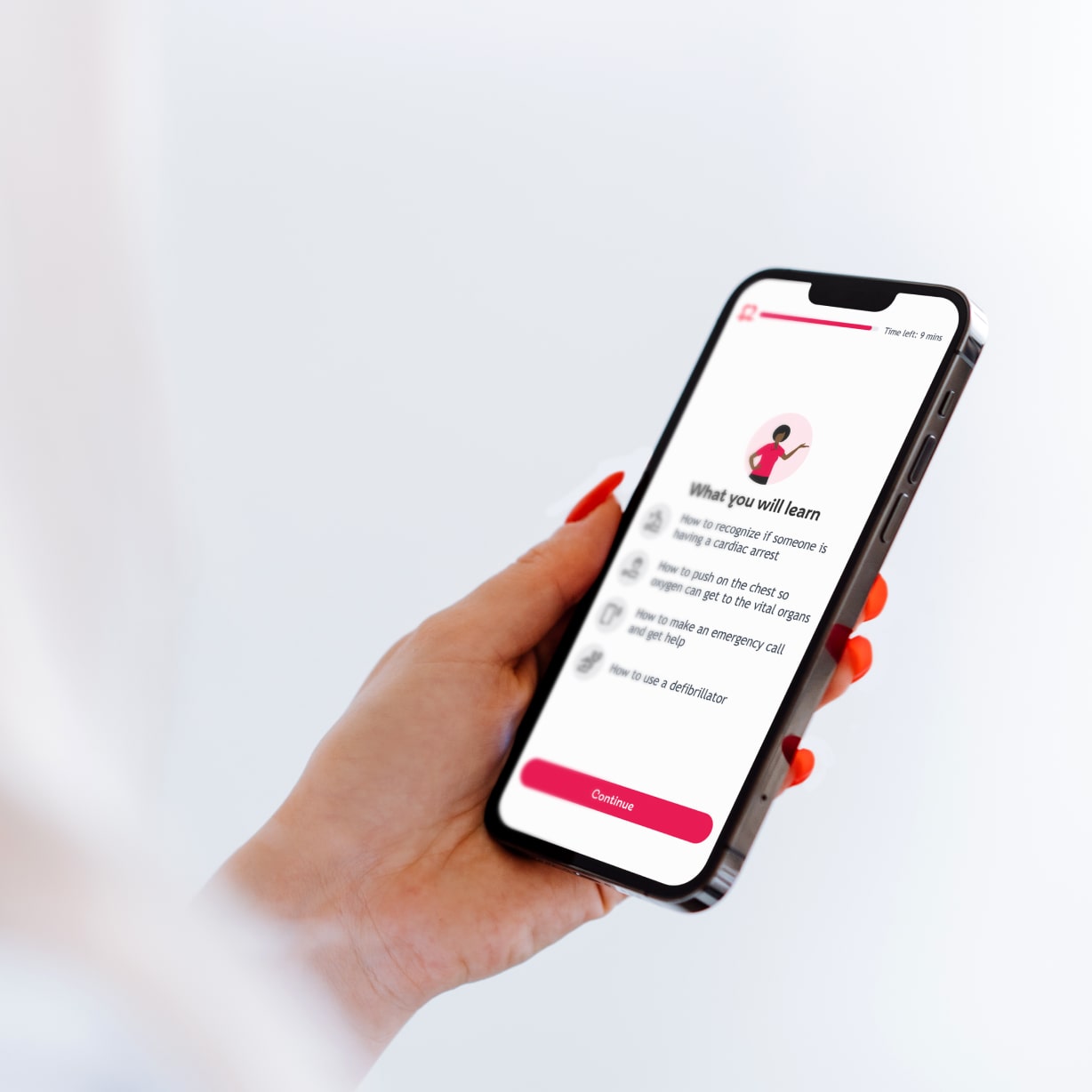
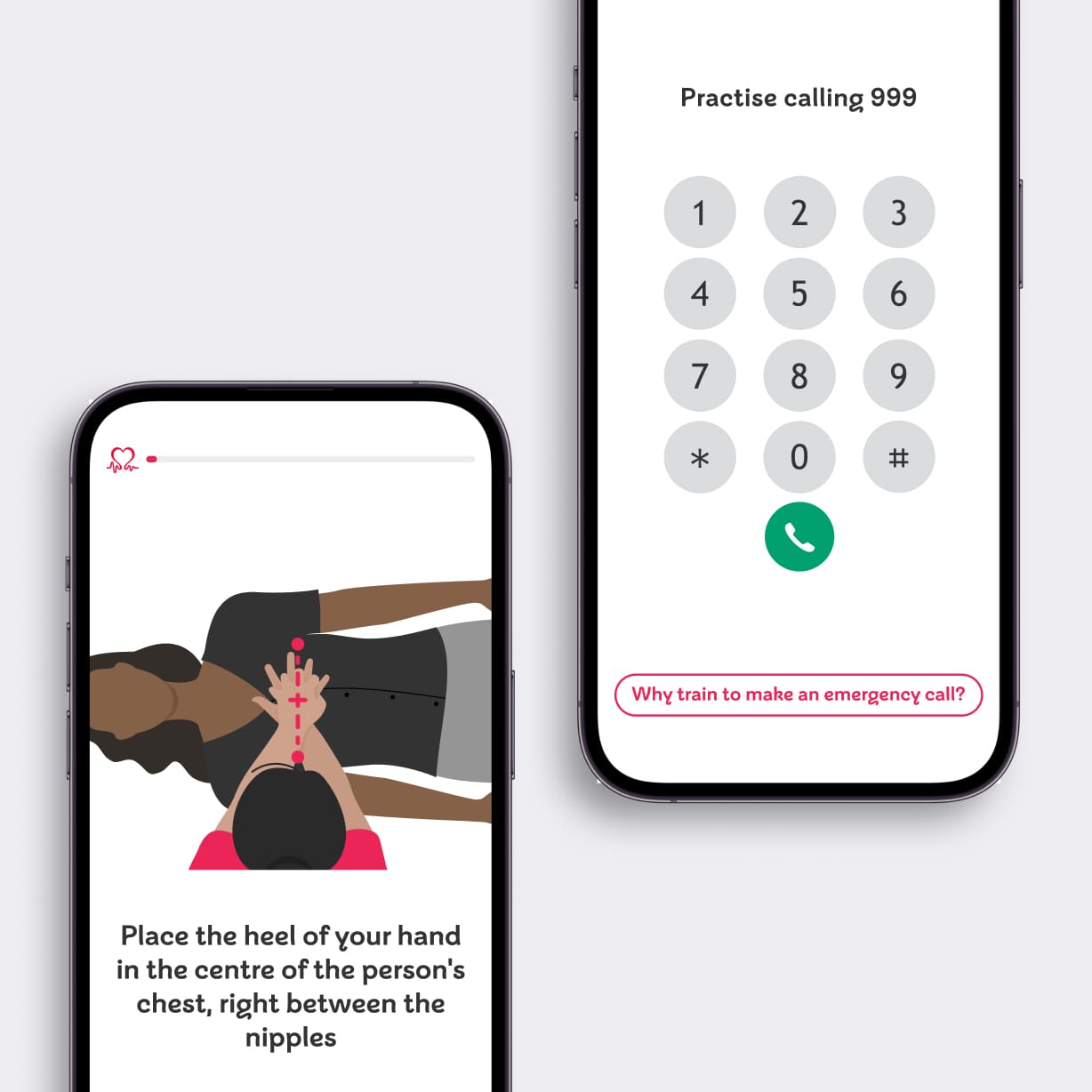
We needed a deeper understanding of people attitudes and beliefs towards self-learned lifesaving skills and CPR trainings.
We have discovered that there are many challenges that influence the low % of people trained and ready to act with confidence in a life saving situation.
- Most people are curious, but post people say they would do such a training at some point.
- What the training entails and how it’s done on a mobile device at home is not fully clear for all people.
- Some users don’t understand the impact training can have.
- User questioning if they are the right person to step-in a cardiac arrest emergency.

Setting goals for our research plan
We need to get answers and insights to move forward
Get insights from early test and research to understand how to build the training
Multiple release phases of the test. Release and learn quickly.
Project Background
Research Goals
Research Questions
Key Performance Indicators
Methodology
Participants
Script
Our Understanding Strategy to lead our product design decisions
- What device will people use to access the prototype?
- Will users allow access to their camera? Will users understand our feedback solution?
- Will users know how to perform an emergency call?
- Will users know how to progress whey they talk to the emergency operator? How long will it take them to complete a training?
- How will they place their phone?
- Will they achieve a correct compression rate?
- Will they be confident to act? Will confidence increase after training?
- Will they share it to others?
- Where will they train? Where do they discover the training?
This was important to understand how should we build the training so people can benefit from an efficient and effective, enjoyable and rewarding experience inspiring confidence and preparing them to save a life.
We were eager to understand and drive our product’s design decisions by customer insights we could rely on.

Failure was an option. Fail to learn Fast. Running quick and efficient experiments to drive our design decisions by data and insights.
/We believed we can increase the engagement throughout the CPR training.
We believed people are not motivated enough to complete the RevivR training. We believed that we can increase the completion rate and therefore create more lifesavers, if we can motivate people highlighting the impact of CPR using real life stories with cardiac arrest survivors, and the impact CPR can have, and if users understood how the camera and practising with a pillow will be used to get the skills.
- We have increased the completion from 19% to 35%
- We have increased the understanding of the physical CPR practise at home and % of people allowing camera for training from 55% to %79

/We needed an experiment to better understand how people practise CPR using our training.
During our first three iterations in our Customer Discovery Program, on average, only %68 of users who used the camera during training, had a detectable rate at least 50% of the time (our definition of success to be able to understand if users perform compressions on their pillow at the correct compression rate).
We have conducted research and usability testings to discover that some users are tilting the phone when practising, and they have a better detectable rate of compressions. Therefore we have decided to improve our practise setup instructions.
We have seen an increase in % of users having a detectable rate thanks to better understanding our users.
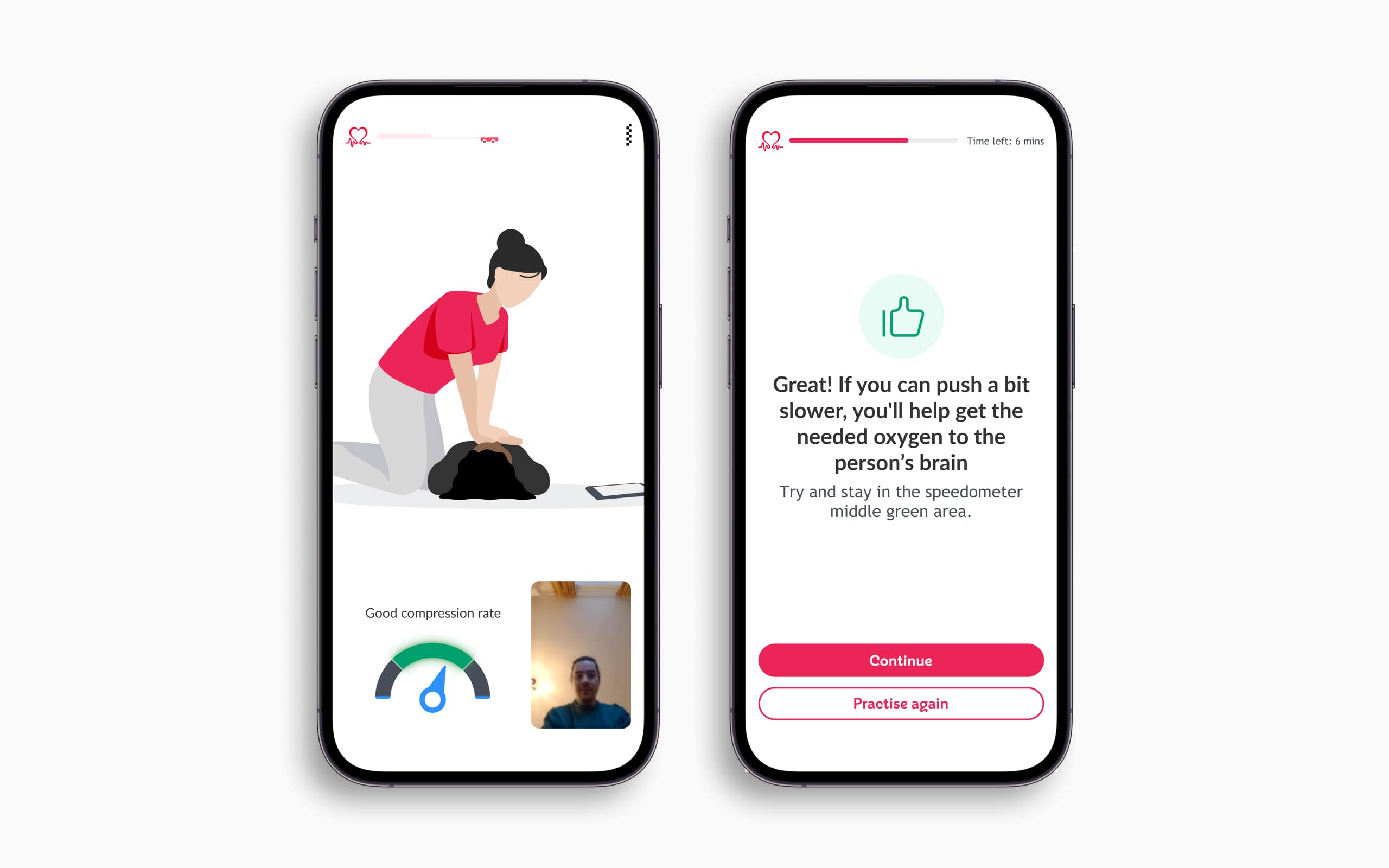
/We believed more people would complete a shorter training while getting the skills to save a life.
We observed that 80% of users who start the training are not completing the physical practise of CPR on a pillow. We believed that asking users to jump right into CPR practise on their pillow to early, is stopping them from putting in the effort to learn a new skill.
We believed that if we introduce users slower into the knowledge of CPR, with easy to complete learning modules in the beginning of the training, will increase the understanding and importance, and will be more willing to learn more, already being invested, and therefore increase the completion rate.
By bringing forward learning modules like Identifying and Assess the scene where a person needs help and practising a 999 Call, modules that can be completed from a couch, the interest and completion increased, from 20% to 25%. (The average completion rate for MOOCs hovers between 5-15 %)
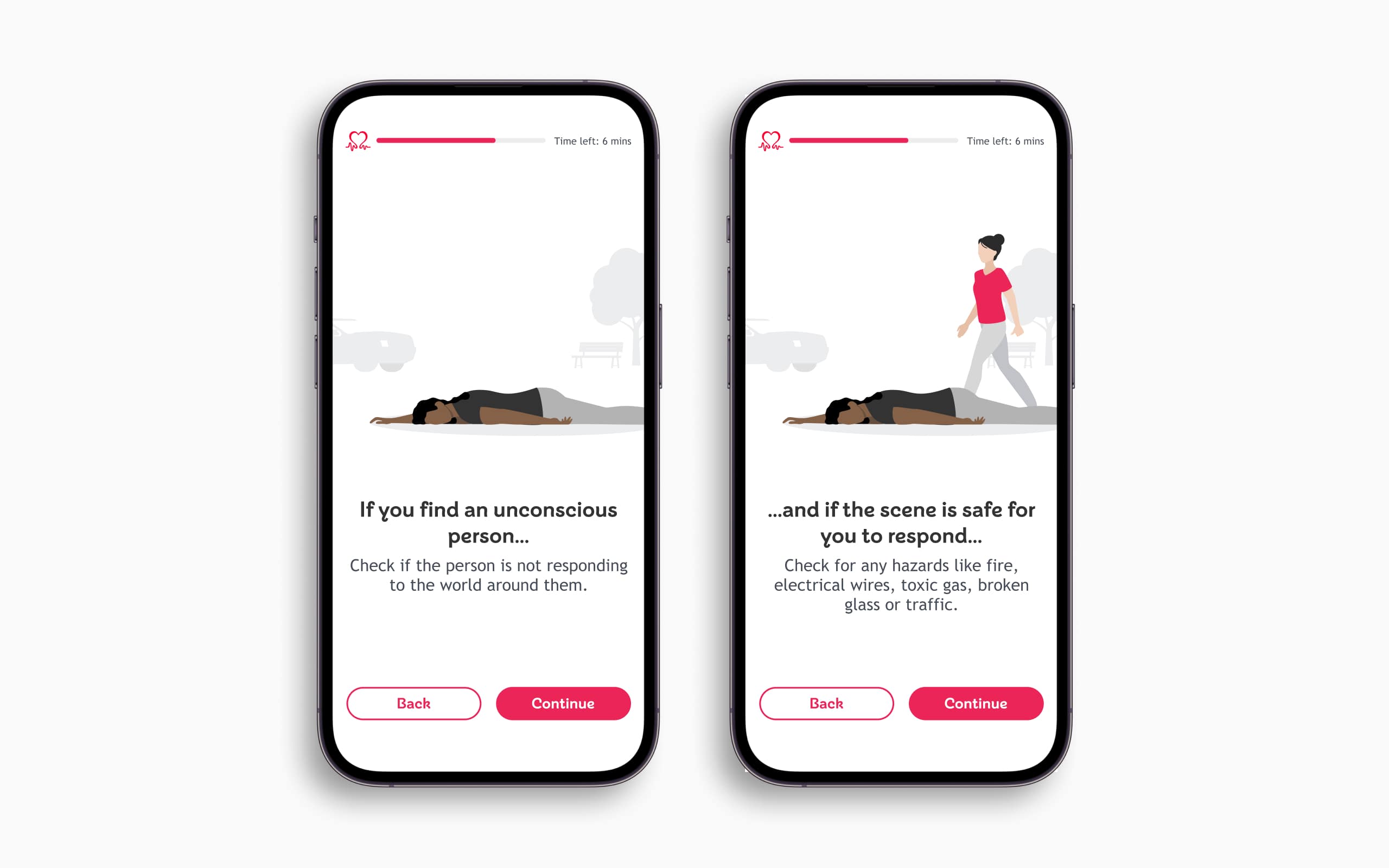
The CPR Training was nominated to UX Design Awards in 2022

Key Takeaways: Design for Saving Lives
In almost 2 years of working in Laerdal, most of my effort was dedicated on the CPR Training people can do at home in 15 minutes, becoming lifesavers.
- We have established a stronger relationship with our partner, British Heart Foundation, that supported us in testing and test a pilot product in the UK, that later proved to be a viable and desirable product, enabling thousands to become lifesavers.
- Being involved in the product lifecycle very early, during the early discovery phase, I supported the team and partner to define and refine the vision and design strategy for the problem identified. Continuously facilitated workshops to collect and put ideas to work.
- Conducted exhuastive research, qualitative and quantitative by diving deeper into both problem and solution space, at every step of the product lifecycle. Led the User Experience Design on the Mobile Training, and initiated first usability testings and defining the most important metrics to track.
- Worked in an autonomous team that enabled us to drive the development of the product in the market as in a start-up team.
- Improved key metrics of both the Product and User Experience, creating more lifesavers, through research, ideation, continuous experimentation, collecting and analysing data, and transform insights into actionable strategies with proved success.
I'm open to be a Dedicated User Experience Research Partner //
adrian sion / 2023
Bucharest, Romania
Phone: +40 755 883 825
Email: sion.adrian@gmail.com


